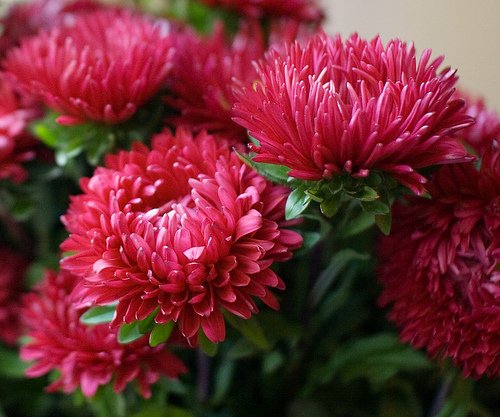An important condition for beautiful plants is a Sunny or lightly shaded place in the garden, with the soil light, moisture and vozduhotehnika, fertile and - most importantly- not sour. In the soil where you intend planting asters, you cannot make manure, the plants will be hurt by Fusarium. You can not grow asters after gladioli, tulips and carnations for the same reason. To his former place of planting and return after 4-5 years.
Asters a good root system when transplanting it is necessary to take into account the required distance between the plants so the eating area was sufficient to "stay". So, low plants have at least 10-15cm from each other, average height - not less than 20-25cm, tall - at least 30-40cm.
Care for annual Aster is the most common. Weeding, hoeing, watering and fertilizing. Plants are fed mainly mineral fertilizer dry or liquid. Organic fertilizer possible to apply only on poor soils. Two weeks after transplanting in flower beds, when the Aster is fully accustomed, make the first feeding. Nitrogen fertilizer 8-10g/sq. m. (urea or ammonium nitrate), phosphate 15-20g/sq. m. (superphosphate), potassium 10-15g/sq. m. (potassium sulfate or potassium chloride). Two subsequent feeding is carried out at the beginning of the extension of buds and flowering. Consisting of only feeding phosphorus (30-40g/sq. m.) and potassium (15-2G/sqm). Nitrogen fertilizers not used because they significantly reduce the stability of asters to Fusarium. Asters respond well to additional contributions on the leaves fertilizer with trace elements (boron, zinc, molybdenum, magnesium, cobalt, manganese).
Watering young plants in dry weather, otherwise they may remain dwarfs. But we should remember that the asters do not tolerate waterlogging.
Growing asters can often be seen as the leaves of the plants become "chewed up" and shrink. The plants need to help and to treat them against pests-thrips with insecticide, for example, "INTA-veer", "Spark", "Fitofarm".
